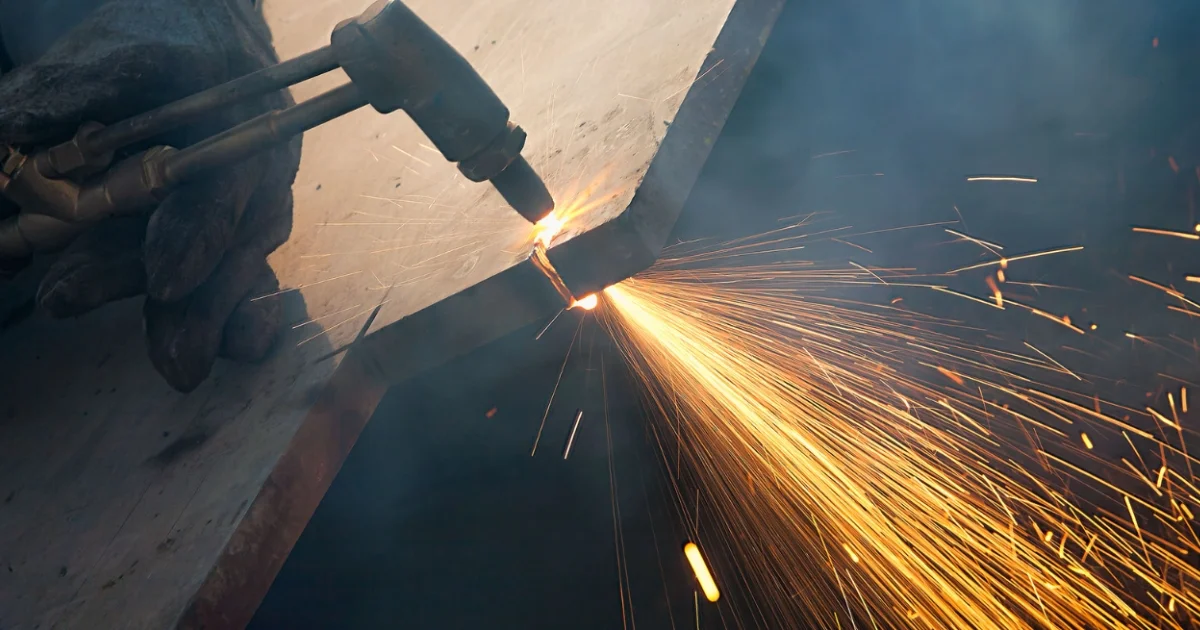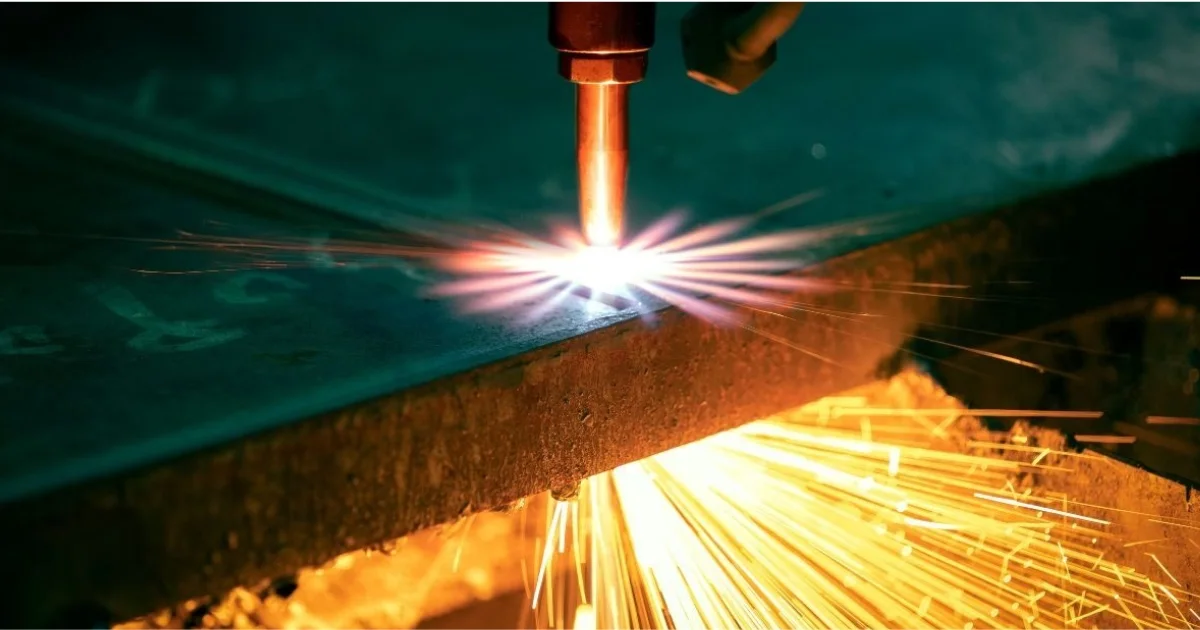
We collect basic website visitor information on this website and store it in cookies. We also utilize Google Analytics to track page view information to assist us in improving our website.
If you’re passionate about metal cutting or just keen to learn more, you’ve landed in the right place.
For over 38 years, Amber Steel has been at the forefront of metal cutting services, specializing in laser cutting, flame cutting, and plasma cutting. Our expertise has carved a niche in this cutting-edge industry, delivering precision and excellence across industrial projects big and small.
In our blog, we’ll share a mix of useful tips, innovative applications, our thoughts on sustainability in steel cutting, and more. Expect stories from the cutting floor, insights into how our processes can streamline projects across industries, and a few lessons we’ve learned along the way.
While we keep some of our trade secrets under wraps, this blog is designed to offer valuable nuggets of wisdom that you simply won't find anywhere else. Whether you’re a professional in the industry or someone fascinated by the possibilities of metal cutting, you'll find something of value here.
So, stick with us as we delve into the finer points of metal work. We’re glad to share our insights and lead discussions that matter to our industry.
How precision metal cutting propels the aerospace industry, from constructing lighter frames to enhancing aerodynamics.
The role of advanced metal cutting in automotive manufacturing, driving innovations in vehicle design and efficiency.
All about the robust and versatile process of flame cutting, ideal for tackling thicker metals with precision and ease.
Discover the art of crafting metal furniture, where cutting techniques meet design to create both functional and aesthetic pieces.
A behind-the-scenes look at the mechanics of metal cutting technologies and the science that makes them tick.
Laser cutting is where extreme precision meets efficiency, allowing for intricate designs and clean finishes.
The critical role of precise steel cutting in developing reliable and intricate medical devices.
How steel cutting supports the oil and gas industry with components that withstand extreme environments and pressures.
Known for its speed and versatility, plasma cutting slices through conductive metals with hot plasma.
Safety first! Tips and insights on maintaining a safe environment while handling powerful metal cutting equipment.
The backbone of construction, where steel fabrication and cutting technologies create frameworks that shape skylines.
Sustainability
A look at sustainability in metal cutting, focusing on practices that reduce waste and conserve energy to protect our planet.

Flame cutting works best for thick steel plates. While laser and plasma cutting are good for thin steel, flame cutting offers key benefits when making edges for vital joints. Edge quality directly affects weld strength, joint integrity, and overall structure. Bad edges lead to weak welds, loose bolts, and even dangerous failures.
This matters most in fields where part failure costs more than money – it can cause disasters. Each year, metal shops across North America waste millions fixing parts with poorly cut edges. These problems lead to delays, safety risks, and damaged reputations. Reports show more challenges in steel supply, making reliable cutting methods even more vital.
Flame cutting – a method Amber Steel has refined since 1986 – creates clean, precise edges perfect for strong welding and bolting. These high-quality edges help prevent costly delays, protect your reputation, and keep projects on schedule.
Clean edges make welding thick steel much easier. Flame cutting creates a controlled heat-affected zone (HAZ) – the area changed by cutting heat. Unlike laser or plasma cuts, flame-cut edges rarely get too hard. This means less grinding, fewer issues, and smoother prep work.
The high-temperature oxidation process in flame cutting helps remove contaminants like oils, coatings, and some mill scale, which may reduce the need for additional cleaning before welding. This built-in cleaning action represents another efficiency advantage for fabricators using flame cutting in their production processes.
Flame-cut edges aren't perfectly smooth, but this slight roughness helps weld metal stick better. Think of how glue works better on sanded surfaces. For joints under heavy loads, this texture greatly improves strength where it matters most.
Strong bolted joints need good edge quality and precise hole placement. Flame cutting excels at both, especially for thick steel plates. The slightly rough flame-cut surface gives high-strength bolts better grip, much like tire treads grip the road. This friction keeps bolts from coming loose under stress.
Flame cutting creates just enough texture to keep bolts secure, lowering the risk of failure in key structures. Precise hole placement is just as crucial. CNC flame cutting systems offer impressive precision, often achieving tolerances within fractions of an inch. However, factors like heat distortion and steel composition can influence final accuracy.
But real-world factors like heat distortion and variations in steel composition can affect final accuracy. For parts that need extremely tight tolerances, additional machining steps might be necessary after flame cutting. This balance between flame cutting capabilities and application requirements helps manufacturers achieve both efficiency and precision. Picture building complex, heavy structures without fighting misaligned holes – flame cutting makes this possible.
Flame cutting can create a hardened ring around bolt holes, which may improve resistance to deformation under load by distributing clamping forces more evenly. For critical structural applications, engineers should evaluate whether this hardening effect benefits the specific joint design or requires additional treatment. For heavy machines that face constant vibration, this small benefit provides major gains in durability and reliability.
Making quality flame-cut edges depends on precise heat control. Too hot, and edges melt unevenly; too cold, and the cut won't go through. Our skilled operators at expertly manage cutting speed, oxygen flow, and torch distance for consistent results.
This expertise takes years to develop through hands-on work with different steel types and thicknesses. For plates from 6 mm up to 200 mm thick, Amber Steel provides precision-cut edges that can be further prepared for welding or bolting as needed, saving valuable project time and labour costs.
Flame cutting's slower, more controlled heat also reduces the risk of cracking and thermal shock, common problems with faster cutting methods. This gentle approach works best for steels that can't handle rapid temperature changes, keeping material integrity intact.
Beyond the right equipment, operator skill plays a key role in flame cutting quality. Our skilled operators fine-tune cutting conditions based on steel type, thickness, and environmental factors, ensuring optimal results with the precision of advanced CNC systems.
Many customers find they spend less time prepping edges when using properly flame-cut steel, saving labour costs on large projects.
Trained operators also know how to handle different steel grades. They adjust for carbon content, alloys, and thickness. This flexibility ensures great results across all the materials used in heavy fabrication.

How does flame cutting stack up against other methods? Plasma cutting works well for thin plates but often needs extra grinding due to hardened edges. Laser cutting offers great precision but struggles with material thicker than about an inch – and costs much more.
Methods like sawing create clean edges but are very slow on thick steel. They also harden the steel, creating stress points that weaken joints. For strength with thick steel, flame cutting hits the sweet spot of cost, quality, and practicality.
The cost benefits grow as material gets thicker. While plasma cutting is faster for thin steel, its efficiency diminishes as thickness increases. For plates over 1.5 inches, flame cutting often provides a more cost-effective solution, especially when accounting for reduced edge preparation time.
Looking at equipment costs, flame cutting systems typically cost less than similar plasma or laser systems for thick plate work. The supplies (oxygen and fuel gas) also cost much less than what high-definition plasma needs when cutting material over 1 inch thick.
Mining equipment like dragline buckets faces relentless stress daily. Flame-cut edges significantly boost weld strength, directly extending equipment life. In high-wear mining operations, properly prepared flame-cut edges help reduce premature failures and stretch service intervals, cutting costly downtime. Mining machinery components made with flame cutting withstand extreme mechanical stress, ensuring critical parts like bucket edges and support beams last longer under heavy loads.
When manufacturers use flame cutting for thick steel sections, they achieve stronger joints that hold up even in the harshest conditions. Flame cutting proves just as vital in construction projects, particularly for heavy structural components like bridge supports and building beams. Engineers often specify flame-cut edges because they've demonstrated reliability under tough conditions.
Heavy transport equipment – railcars, trailers, and similar structures – also benefits from flame cutting. These components experience constant vibration and cycling stress, where poor-quality edges quickly become weaknesses. Flame cutting ensures lasting connections, greatly reducing downtime and failure risks.
Amber Steel's flame-cut edges meet CWB W59 and CSA W47.1 standards, guaranteeing high-quality surfaces for welding in structural applications. These industry standards acknowledge that properly executed flame cuts enhance joint performance when the right techniques are applied. This formal recognition confirms the reliability of flame-cut edges for critical connections.
An often-overlooked advantage of flame cutting is its versatility across varying material thicknesses. Unlike some cutting methods that struggle with thickness changes, flame cutting handles both thin and thick sections on the same plate with consistent edge quality. This feature proves especially valuable for complex structural parts with varying cross-sections.
To get the most from flame-cut edges, follow these simple guidelines:
For welding:
Removing slag or debris promptly is recommended for clean welds. Common methods include grinding, chipping, or wire brushing, depending on project requirements and material type.
Keep proper preheat temperatures for thicker materials
Check edges carefully before welding
For bolting:
Clean edges well after cutting
Use proper bolt torque and bolt quality
Verify alignment before final assembly
Communication matters, too. Clearly explain what your project needs to your cutting provider. Amber Steel adjusts cutting settings based on whether edges will be used for welding, bolting, or both – ensuring you get exactly what your project needs.
In the end, reliable connections in heavy steel structures depend on edge quality. Flame cutting remains a trusted solution for thick steel fabrication, offering reliable performance across industries from mining to construction. Its consistent performance across decades of industrial use proves its lasting value.
For materials over 1 inch thick, flame cutting creates ideal interfaces for both welding and bolting applications. The unique properties of flame-cut edges - including the slightly rough surface and controlled heat-affected zone - provide natural advantages that other cutting methods simply can't match. These properties directly translate to stronger connections, longer component life, and fewer failures in service.
The cost-effectiveness of flame cutting for thick plate work remains compelling when comparing total fabrication time. While initial cutting might be slower than some methods, the reduced edge preparation time and improved join quality often result in lower overall project costs. This economic advantage, combined with the reliable performance of flame-cut connections, explains why many industries still specify this proven technology.
As fabrication demands continue to evolve, flame cutting adapts through improved equipment and refined techniques. Modern CNC systems bring digital precision to this established process, allowing for complex edge preparations that optimize joining performance. The basic benefits remain the same - clean, consistent edges that form the foundation of strong, reliable connections. For critical applications where connection failure isn't an option, flame cutting provides the edge quality that demanding industries trust.
Need help with your next heavy fabrication project? Contact Amber Steel today to discuss how flame cutting can improve your connection quality and reduce overall fabrication time.